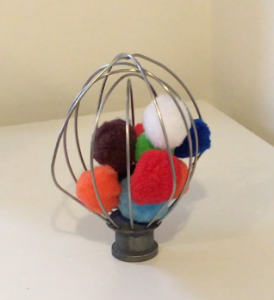Do some of your students really struggle with fine motor skills and therefore their handwriting? Perhaps they have become frustrated with writing and you are now having a hard time engaging them in written tasks? Then read on!
“Kids do well if they can.” The Explosive Child – Ross W. Greene, Ph.D.
Children are brilliant at developing survival skills. They adapt and create strategies to get them through difficult and unknown situations. I often find in the classroom, that if you present students with a task they find really challenging with very low success rate, then the chance of them remaining motivated to stay on task is extremely low. You may also be familiar with the comments below, which if you delve a little deeper, are often a cry for help or a way to escape a problem.
Miss, my pencil keeps breaking.
Sir, I need to go to the bathroom.
This is SO boring.
In school we expect writing skills to be used throughout the curriculum, but we also expect students to complete activities and tasks requiring fine motor skills such as doing buttons and zips. Developing these critical independence skills will not only support life long learning but also boost their self-esteem. Who really wants to have an adult supporting them to change for PE and have to ask for someone to do up their shoe laces?
What can we do to support fine motor skills?
We need to go back a stage and spend time developing these skills. Fine motor skills involve the use of the smaller muscles of the hand and are therefore needed for activities like using pencils and scissors, and for self-help skills such as doing up buttons and cleaning teeth. We use our fine motor skills each and every day when we engage with IT whether manipulating a mouse control or working a touch screen phone.
These skills are crucial to our lives.
Read on for 10 easy to set up fine motor activities for your students to practise daily. Created from items found in the home, these projects are free and best of all support recycling. In our class, we set up a rotation of fine motor skills activities and the students complete two tasks each day. They really look forward to completing the tasks and they view them as puzzles to solve. I find that once you have set up your initial set of 10 activities, you can then substitute activities in and out to keep it fresh and engaging.
1 Thread Crazy Straw
- Hooped cereal
- Crazy straw
- Carefully thread each hoop onto the straw. The hoops are fragile, so you may want to use beads for those who might become easily frustrated – or those who are hungry!
2 Golf Tee Push
- Golf tees
- Cardboard box or polystyrene block
- Push each golf tee into the box. You can create holes already for the golf tees to fit into.
3 Pom Pom Release
- A kitchen whisk
- Soft pom poms
- Each pom pom has to be removed from the whisk. Free the pom poms!
4 Pine Cone Bands
- Pine cone
- Elastic bands
- This task can be completed in two ways. Either wrap all elastic bands on the pine cone, or take them off. If the pine cone is too tricky to start with, use a cardboard tube to place the bands around.
5 Ribbon Pull
- Cardboard box
- Ribbon, scarf or strips of material
- Cut small holes all over the box with just a little bit of ribbon showing and then pull away! A really satisfying task, but make sure you have a well taped together, sturdy box. It can get a bit of a rough handling with the excitement!
6 Pom Pom on Pool Noodle
- Pom poms
- Pool noodle cut into pieces
- Use hands and fingers to place each pom pom on top of a piece of pool noodle. Similarly, for a further challenge, use toy tweezers or kitchen tongs to pick up each pom pom and place it on top.
7 Tube Tower
- Cardboard tubes
- Cardboard circles
- Be warned, this task takes real patience! Initially start with just 2 or 3 tubes and then as a result of the children growing in confidence you can add more as required. Always go for success first as it creates the motivation to try more.
8 Pegs on Ribbon
- Ribbon
- Clothes pegs
- Get pegging! You can peg all along the ribbon or if you have the environment, set up a washing line to peg to. The rules are…….there are no rules! Get creative and peg everything from box lids to teddy bears!
9 Tubes & Straws
- Cardboard tubes
- Straws
- Cut holes into the tube for the straw to be poked through. You can leave one in as an example of what the student has to do.
10 Thread a Lace
- Shoe lace
- Hoop cereal
- Thread each hoop onto the lace. You could tape or mark with a pen on the lace where you want each hoop to go. Again, this is a delicate task and not one for the hungry! For these kids, substitute the cereal for beads or cut pieces of straw for them to thread along the lace instead.
Fine motor skills are not only beneficial for developing strength and control in your fingers they are fun activities that everyone can enjoy! This is a great task for you to join in with your students and model to them patience, resilience and enjoying success. Be warned though, collecting recycling bits and bobs for your tasks brings out the hoarder in all us teachers.
Check out our board of ideas on Pinterest. We gather great ideas from around the globe and save them HERE!
Go and raid your recycling today!
thinking differently
The Autism Junction
